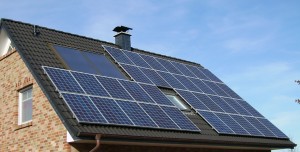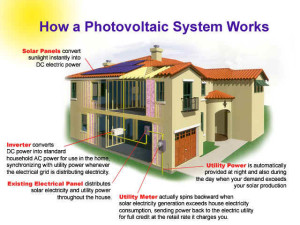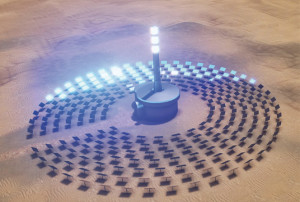 Is Solar PV worth the investment?
Is Solar PV worth the investment?
Many homeowners think of solar power as a huge investment, that they’ll never be able to afford. Indeed, historically, solar power has been out of reach for most, and even those who could afford it saw very slow pay-offs. But here we are in 2014, and we find that now, finally, residential solar power systems are becoming financially viable! Not only is the cost down to a reasonable level, there are also many incentives, rebates, and other ways to get a return on your investment.
Streamline your home first
The hard part is, for most homeowners, that there are many other higher priority projects to tackle first. Before thinking about solar power, you should make sure your home is energy efficient. Improving the leakage of your home, correctly engineering and sealing a duct system, installing a correctly sized efficient HVAC system, and well installed insulation can have a more immediate impact on energy conservation, air quality, durability and comfort. For an in-depth analysis of your home’s current issues and potential level of comfort/efficiency, schedule an energy audit (call 925-363-4498 or e-mail info@epbuilders.com).
Cash in
If you have an efficient home, and install a solar system, it is possible to make a significant profit by selling power back to “the grid.” In the U.S., the PURPA (a legislature put into effect in 1978 as part of the National Energy Act) dictates that electric companies using the traditional power grid must purchase the excess electricity generated by renewable resources. This means that if you’re generating more power than you’re using, you will get paid! Many homeowners are making about $3,000/year, through combination of selling excess power, and cashing in on government clean energy incentives.
 Incentives in California
Incentives in California
Incentives vary based on region. Check out the links below for details.
—How to sell power back to PG&E
–Information on tax credits from GoSolarCalifornia
—Information on rebates from DSIRE
PV = Photovoltaic
There are numerous methods for converting sunlight into electrical energy, but for small scale use (such as residential), the method used is almost always PV (Photovoltaic). The cost of PV power cells has declined steadily, and is now competitive with other forms of renewable energy. Additionally, technology and architecture has improved the effectiveness of PV systems, and expanded the geographical area where they can be used efficiently. As a result, the amount of solar power generated worldwide has increased rapidly in the last few years. From 2010 – 2013, the total global capacity from solar PV increased from 40 GW to 139 GW. This is the most convincing evidence that solar power is financially viable, at last!
Going Net Zero
For those looking to turn their home into a net zero energy home, you need to have an electric form of water heating and home heating so that it can be offset by solar. For most situations we encourage a well sized, well designed, efficient forced air heat pump system. Sizing, careful design/install, duct engineering, airflow balancing, duct sealing are all key in making this system very comfortable and efficient. Every well insulated and sealed home has the potential to have a system installed that keeps the home an even comfortable temperature all year around and costs very little to operate. Once the home is efficient, the lights are LED and the plug-in appliances are not excessive in their energy demand then the home is ready to have a solar PV system sized for it.
Even if you are only looking to offset the peak electrical demand (smaller solar panel) and not go completely net zero energy, this logic still applies.
 Concentrated Photovoltaic and Concentrated Solar Thermal
Concentrated Photovoltaic and Concentrated Solar Thermal
New technologies have combined different fields to achieve much higher energy yields from smaller panels. Concentrated photovoltaic uses optics, such as lenses or curved mirrors, to focus the sunlight. So far, this technology is expensive, because of the lenses/mirrors, and sometimes solar trackers and cooling systems. But someday, it may have a place in residential applications.
Concentrated solar thermal is similar, but instead of converting light directly into electricity, it converts it into heat, which drives a turbine (usually steam), thereby generating electricity. This is more common than CPV, but is generally for larger-scale use, not residential.
[dropshadowbox align=”none” effect=”lifted-both” width=”640px” height=”” background_color=”#ffffff” border_width=”1″ border_color=”#dddddd” ]For more information, call (925) 363-4498 or e-mail info@epbuilders.com to speak to a technician, or schedule an energy audit.[/dropshadowbox]

Speak Your Mind